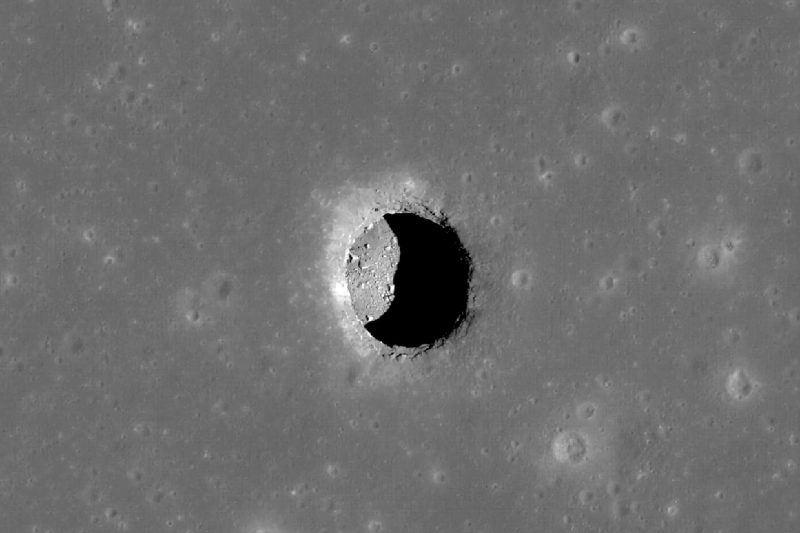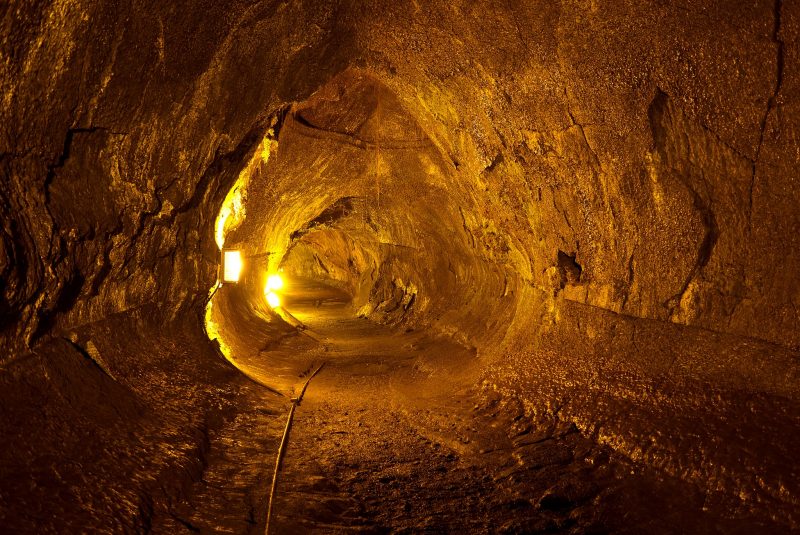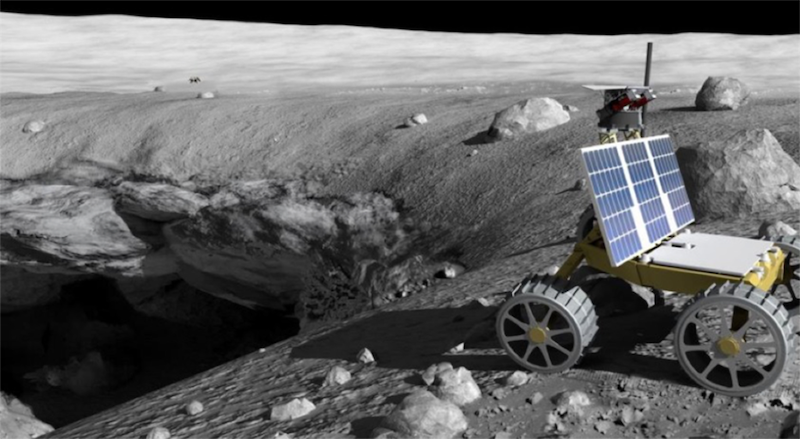
If future explorers want to live and work on the moon, they’ll need to have a hospitable environment. The moon has virtually no atmosphere, so daytime temperatures on the moon can hit 260 degrees Fahrenheit (126° Celsius), while nighttime temps can drop to -280 F (-173 C). But a team of scientists announced on July 26, 2022, that they’ve found pits and caves on the moon that have a permanent temperature of 63 F (17 C). It’s what the scientists are calling sweater weather.
The team of scientists included Tyler Horvath and David Paige of UCLA and Paul Hayne of the University of Colorado Boulder. They published their study on July 8, 2022, in the peer-reviewed journal Geophysical Research Letters.
Moon caves, pits and lava tubes
Scientists have known about pits on the moon since 2009. NASA’s Lunar Reconnaissance Orbiter (LRO) found more than 200 pits on the moon. Horvath said:
About 16 of the more than 200 pits are probably collapsed lava tubes.
Earth is also home to lava tubes, such as those that visitors can tour at Hawaii Volcanoes National Park. They form when rivers of lava carve out pathways underneath lava flows, or when the exterior crusts solidify. The mares or “seas” on the moon are ancient lava flows that have solidified into plains. Entrances to the lava tubes appear as pits once the crust atop a lava tube collapses at a thin spot.
When analyzing the pits on the moon, the scientists found that two of the most prominent pits have visible overhangs. They said that they clearly lead to some sort of cave or void. They also believe there’s strong evidence of a large cave from a third pit’s overhang.

Taking the moon’s temperature
Horvath analyzed images from the LRO‘s thermal camera – the Diviner Lunar Radiometer Experiment – to check the temperatures within the pits compared to the surface. In Mare Tranquillitatis, he studied a cylindrically shaped depression that’s about the length and width of a football field. Using computer modeling, the researchers could track the temperature changes in the pit over time.
What they found was that the temperatures remained relatively stable at about 63 F (17 C) in the shadows. And they said that any caves or tubes leading off the pit would also maintain this relatively comfortable temperature.
The key to the steady temperature, the researchers said, is the overhangs. They keep shadowy locations from getting too hot during the day and from having heat escape at night. The areas of the pit where the sun reaches bake at up to 300 F (148 C), even hotter than the moon’s surface. Horvath said:
Because the Tranquillitatis pit is the closest to the lunar equator, the illuminated floor at noon is probably the hottest place on the entire moon.

Moon caves are a welcome environment for humans
The extreme temperatures on the moon are a challenge for humans setting up any permanent moon base. A day on the moon lasts about 15 Earth days, and a night lasts about 15 Earth days. That would mean solar power on the moon would be inaccessible about half the time. The moon caves would remedy this issue, along with others. Moon caves would also provide some protection against cosmic rays, solar radiation and micrometeorites. Paige said:
Humans evolved living in caves, and to caves we might return when we live on the moon.
The best thermal map in the universe
The Diviner Lunar Radiometer Experiment has been mapping the moon since 2009. It has now produced the most detailed and comprehensive thermal measurements of any object in our solar system, including Earth. The researchers had to align the many images from the thermal camera until they had an accurate thermal reading down to a single pixel. Horvath explained:
Because nobody else had looked at things this small with Diviner, we found that it had a bit of double vision, causing all of our maps to a be a bit blurry.
Future exploration of moon caves
A proposed Moon Diver mission aims to send a rover in to rappel down and explore the Tranquillitatis pit. You can also read about the tiny PitRanger, designed to explore the pits on the moon.

Bottom line: Scientists announced that moon caves, shaded pits and lava tubes have locations where temperatures hover around a comfy 63 degrees Fahrenheit (17 degrees Celsius). These would be perfect locations for future explorers to live and work.











